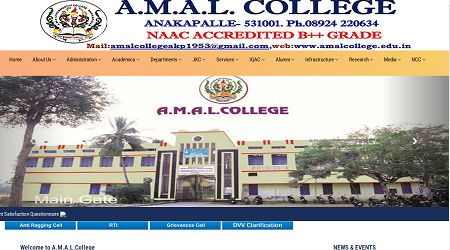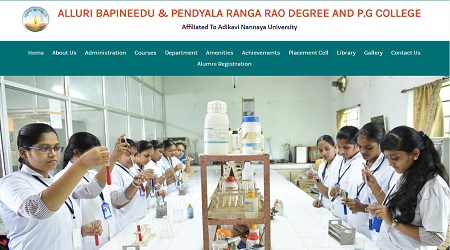phd thesis writing services in india,
phd thesis writing cost in india, writing phd thesis in 1 month, phd thesis writing services in india, how to write phd thesis in india, how to write phd thesis pdf, phd thesis example, when to start writing phd thesis, phd thesis example pdf,The uniqueness of a Ph.D. thesis is its distinguishing feature. A Ph.D. thesis, in comparison to other types of research papers, is extremely important for the academic topic in question. The goal of a Ph.D. thesis is not only to obtain an academic degree, but also to make a significant contribution to the subject of study. Universities take tremendous satisfaction in having a Ph.D. thesis that contains ground-breaking findings and solutions to problems.
THREE_BUTTON
Background Purpose for Research Issue Resolution
The objective of creating a Ph.D. thesis is to motivate a very innovatively studied new idea, not just to acquire a degree. This innovative concept tries to address a persistent issue that has yet to be addressed. As a result, the subject of writing a Ph.D. thesis is not only difficult but also requires previous knowledge of the chosen topic, substantially. To be recognized as a Ph.D. scholar, the researcher must submit an original and scientifically persuasive paper to the university.

Thesis Writing Pattern or Layout
The following sections must be included in the structure of a thesis. It’s worth noting that the titles listed below may be renamed or restructured according to the researcher’s preferences. The chapter-by-chapter distributions, however, will remain unchanged. How to write a thesis for a Ph.D.? The pattern listed below provides a fundamental framework to help you – How to write a thesis for a Ph.D.?
- Cover Page: The Title of the Research must be declared on the ‘Cover Page’ of a Ph.D. thesis. On this page, the researcher might put a watermark about the case or the university.
- Title Page: The title of the thesis appears on the ‘Title Page’ page. It needs to be accompanied with the following details:
- The title of the Ph.D. thesis should be written in ALL CAPS.
- The Research Scholar’s name
- The Department’s name
- The University’s name
- The Degree Program’s name
- Supervisor’s Full Name
- Submission Deadline
- Acknowledgements: This page for ‘Acknowledgements’ is crucial since it is on this page that the researcher must make declarations about all of the people that helped him or her complete the research process. It usually begins with “I’d like to express my gratitude to…”
- Abstract: This page is intended to provide a high-level overview of the goals and the outcomes process. The research’s findings and conclusions are also presented here. If the researcher wishes to make more detailed statements regarding the findings, this abstract should be referred to as a ‘Executive Summary.’ The ‘Executive Summary’ is a detailed overview of the research process that was described in the ‘Abstract’ in a very compact manner.

- Table of Contents or Index: The ‘Table of Contents’ page functions as a road map to the study effort complete with page numbers. It lists all of the headings and subheadings found in the research paper. This page of the Ph.D. thesis soft copy provides immediate access to the required page.
- Figures, Graphs and Tables: This page contains a list of the available figures, graphs, and tables that were included in the research article. It includes page numbers as well as the titles of the figures, graphs, and tables for easy access.
- Introduction: This is typically referred to as the first chapter of a PhD thesis. The following are the most significant additions to this chapter:
- Statement of the Research
- Research Background
- Research Aims
- Question/Problem of the Research
- Objectives of the Study
- Hypotheses for Research (if any)
- Relevance of the research
- Structure of Research
- Literature Review: This chapter is extremely crucial in the process of writing a thesis or a Ph.D. thesis. It all boils down to going from unknown to well-known. In this chapter, the researcher must comprehend the importance of assessing all factors that can contribute to the research objectives. This chapter must include the following items for this purpose:
- Empirical Understanding
- Realizations of Concepts
- Introspections into theories
The researcher must read relevant books, peer-reviewed journal articles, various official data, and information made available by the University library in order to accomplish the aforementioned goals. Furthermore, when searching for relevant material on the internet, the most credible sources should be considered, such as Google Scholar, JSTOR, Emerald, EBSCO, and so on. To address the challenges raised by the topic, the research should use the following approach:
- Evaluation of Sources
- Identification of themes and debates
- Marking the Gaps
- Outlining of the Structure
- Commencement of the Literature Review
Noteworthy Point: Well-acknowledgement of every resource is a must here for plagiarism evasion.
- Methodology of Research: When the researcher has decided how to acquire primary data, this chapter is built. The primary data is gathered to fill in the gaps in the secondary data. The researcher’s choice of study methodology is determined by the type of data he or she wants to collect. The research methodology is one of the best suggestions for writing a Ph.D. thesis because it specifies how the data will be analyzed.
- For data in the form of words, the qualitative approach is used.
- Data in the form of statistical variables is used in the quantitative approach.
- The Descriptive Approach measures data in its most basic form.
- Experimentation is at the heart of the experimental approach.
- Results & Analyses: This chapter on Results and Analyses must be arranged in such a way that the reader feels at ease in absorbing the researcher’s notion and derivations. This chapter must adhere to the following guidelines:
- Actual observations and statistical derivations should be used to declare the results.
- For a better understanding, the results must be analysed in statements, tables, and graphs.
- The results must be analysed in reference to the secondary data gathered during the Literature Review.
- Discussion: The discussion chapter remains focused on achieving the research objectives by establishing the relationship between primary and secondary data. The following top tips for writing a PhD thesis should be considered by the researcher:
- In an unbiased approach, both positive and negative derivations are made.
- The conversation should pave the way for more research.
- Conclusions: This chapter summarizes all of the research findings. The researcher must explain the research procedure and how he or she arrived at the study’s significance in this chapter.

- Recommendations & Future Study: The chapter on Recommendations and Future Research is crucial since it sets the path for solutions and future research methods in the relevant domains. This is a very significant chapter in the study because it provides a vision for the investigation.
- References: The researcher must list all secondary sources that were used in the research in this section. This list must be formatted according to the University’s suggested Harvard, APA, MLA, or Chicago styles, which are subject-specific. Any type of error in this section can result in the work being rejected.
THREE_BUTTON
Bibliography: The researcher should include any literary sources that can help them have a better knowledge of the research issue in this list.
Latest News & Updates
- G H Raisoni University Phd in Interdisciplinary Subjects Admission 2024-25, Fees and Research Assistance
- G H Raisoni University Phd in Cinematography Admission 2024-25, Eligibility, Fees and Guidelines
- G H Raisoni University Phd in Direction Admission 2024-25, Fees and Research Assistance
- G H Raisoni University Phd in Film and Television Admission 2024-25, Eligibility, Fees and Guidelines
- G H Raisoni University Phd in Film Making Admission 2024-25, Fees and Research Assistance
- G H Raisoni University Phd in Journalism Admission 2024-25, Fees and Research Assistance
- G H Raisoni University Phd in Mass Communication Admission 2024-25, Eligibility, Fees and Guidelines
- G H Raisoni University Phd in Media Arts Admission 2024-25, Fees and Research Assistance
- G H Raisoni University Phd in Folk Arts Admission 2024-25, Eligibility, Fees and Guidelines
- G H Raisoni University Phd in Graphic Design Admission 2024-25, Fees and Research Assistance
Top Courses
- BACHELOR OF ARTS HONOURS IN HINDI
- BACHELOR OF ARTS IN HOME SCIENCE
- BACHELOR OF ARTS HONOURS IN FINE ARTS
- BACHELOR OF ARTS IN FRENCH
- BACHELOR OF ARTS IN APPLIED PSYCHOLOGY
- BACHELOR OF ARTS IN GANDHIAN SOCIAL WORK
- BACHELOR OF ARTS IN AIRLINES, HOSPITALITY AND CUSTOMER CARE
- BACHELOR OF ARTS IN ENGLISH LITERATURE
- BACHELOR OF ARTS IN ENGLISH
- BACHELOR OF ARTS IN ECONOMICS WITH TRANSPORT STUDIES




















